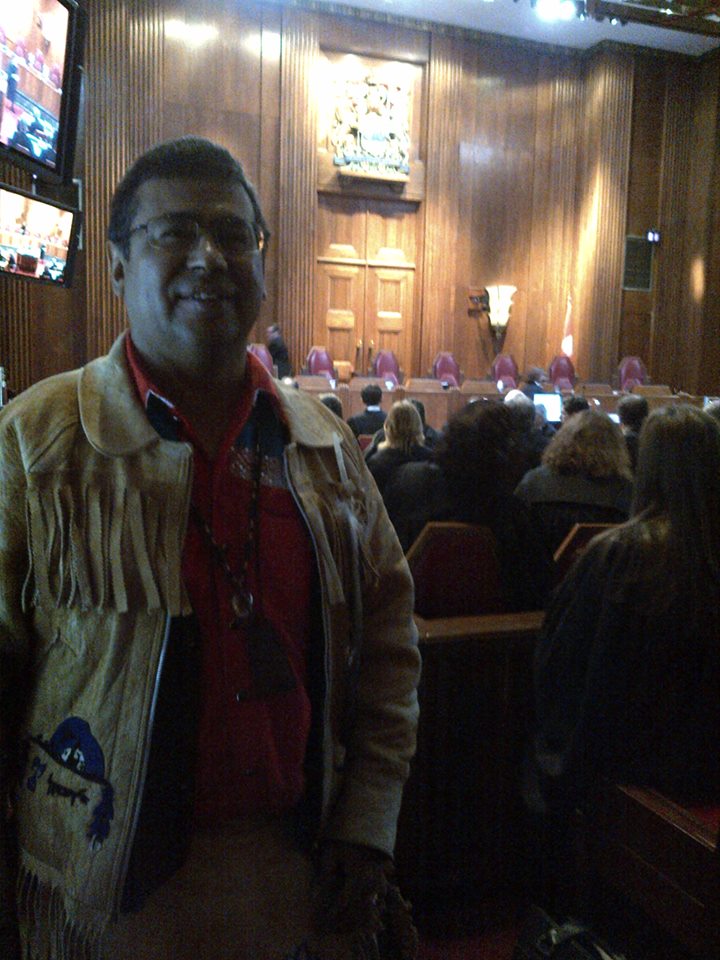This is a photo I took of Xeni Gwet’in Chief Roger William in the Supreme Court of Canada courtroom this morning around 9 a.m. just before the nine-member court entered and began to hear the Tsilhqot’in Nation’s case for a ‘declaration of title’ to its territory in British Columbia.
Earlier this week, Chief William stated, “I’m thinking of when we first started this fight with this declaration of 1989 where our people declared (there would be) no commercial logging, no commercial mining in our territory area. It wasn’t our plan to be here in the Supreme Court of Canada, but as we move forward trying to work together under provincial and federal legislation, we have ended up here.”
In 2007, B.C. Supreme Court Judge David Vickers ruled that the Nation had aboriginal rights throughout the claim area and that they had title to about 40 per cent of the claimed land. But Vickers stopped short of declaring the title into law citing technical reasons (the claim had been pursued as ‘all or nothing’). A subsequent decision by the B.C. Court of Appeal took a narrower view, finding that title applied only to areas of ‘intensive presence at a particular site’ (which has been described as ‘postage stamp’ pieces of land where there is proof of exclusive possession over individual salt licks and particularly effective fishing rocks and specific places where ancestors settled), not to larger claims based on limited use.
The Council of Canadians participated in the Supreme Court hearing as interveners. We were represented by Ratcliff & Company LLP senior litigation partner Gregory McDade (the founding executive director of the Sierra Legal Defence Fund, now Ecojustice) and Matthew Kirchner (both in this photo). In his 10-minute presentation, McDade challenged the Court of Appeal ruling that Aboriginal title could only be defined/ recognized for small fragmented areas of land stating it was not appropriate to argue that a broad recognition of title would burden existing non-indigenous interests.

It is expected that the Supreme Court will rule in 6-8 months’ time, so sometime between April and June 2014. A decision by the Harper government on the approval of a controversial $1-billion copper-gold mine on Tsilhqot’in territory — opposed by the Tsilhqot’in National Government — is expected earlier than that, in February 2014.
The case that was heard yesterday began more than two decades ago when the provincial government granted logging rights within the Xeni Gwet’in Nation’s traditional territory.
Chief William says, “Right across Canada there’s a lot of uncertainty. From mining to pipelines, there’s many uncertainties and I think this title case is going to create certainty for all.”



